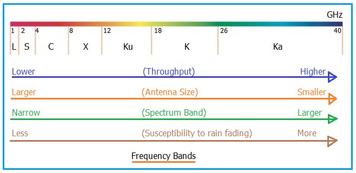10 Radar Interview Questions and Answers
Prepare for radar job interviews with these frequently asked 10 questions covering radar principles, systems, and applications.
Showing 25 posts (Page 1 of 3)
Advertisement
Prepare for radar job interviews with these frequently asked 10 questions covering radar principles, systems, and applications.

Explore the benefits and drawbacks of active radar homing, a guidance system used in air-to-air missiles. Understand its accuracy, cost, and operational limitations.

Explore AESA radar technology: block diagram, working principles, and advantages of Active Electronically Scanned Array radar systems.

Explore the key distinctions between AESA (Active Electronically Scanned Array) and PESA (Passive Electronically Scanned Array) radar technologies, including features, advantages, and similarities.
Explore the differences between Angle Tracking Radar and Monopulse Tracking Radar, focusing on their methods for determining target location and trajectory.
Understand the differences between ARSR and ASR radars used in air traffic control for airport vicinity and air routes.
Overview of automotive frequency bands used in the USA and Europe, covering applications from parking sensors to radar systems, including GNSS, cellular, and LIDAR.

This article compares branch, balanced, and circulator duplexers, exploring their differences, advantages, and disadvantages in RF systems.

Explore the distinctions between coherent and non-coherent MTI radar systems. Learn how they detect moving targets and their applications.

Comparison of Costas, Barker, and Frank codes as digital pulse compression techniques used in radar systems. Learn their advantages and disadvantages.

Explore the pros and cons of CW radar, including its benefits for velocity measurement and limitations in range detection. Understand its applications and drawbacks.

Compare active vs passive remote sensing and explore difference between active and passive remote sensing types with respect to their advantages and disadvantages.
Learn about Doppler resolution in radar systems, its formula, and how it enables radars to differentiate between targets moving at different velocities.
Explore different radar display types like PPI, A-Scope, B-Scope, and others. Learn how each scope visualizes radar data for various applications, from military to weather monitoring.
Comparison of fanned beam, sector beam, and cosecant square beam antennas used in radar systems, highlighting their applications.

Explore the principles of FMCW radar systems, including frequency modulation, range calculation, and typical applications for short-range detection.

Explore the workings of frequency scanned radar, its advantages, and disadvantages. Learn about its operation, scanning techniques, and limitations.

Learn about Ground Penetrating Radar (GPR) systems, their working principles, applications, depth range, advantages, and disadvantages. A comprehensive guide to GPR technology.

Explore K band frequency characteristics, advantages like balanced throughput and antenna size, and applications in radar, satellite, and astronomy.

Explore Ka band frequencies (27-40 GHz), advantages like high-speed data, and applications in satellite communication, radar, and space telescopes.

Explore the L band's frequency range (1-2 GHz), wavelength (15-30 cm), applications in communication, advantages, and disadvantages in various industries.

Explore the differences between LiDAR and RADAR technologies. Learn about their working principles, advantages, applications, and which is best for your needs.
Explore the distinctions between magnetrons and crossed-field amplifiers (CFAs), their applications in radar and communication, functionality as oscillators vs amplifiers, and interaction types.

Explore the advantages and disadvantages of magnetrons, high-power microwave oscillators used in radar systems and microwave ovens. Learn about their benefits and drawbacks.
Explore the key differences between pulse and FMCW radars used in missile seeker systems, focusing on performance specifications and applications at 35GHz and 94GHz.
Advertisement